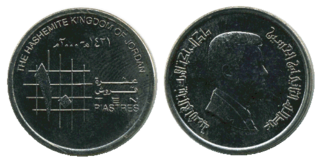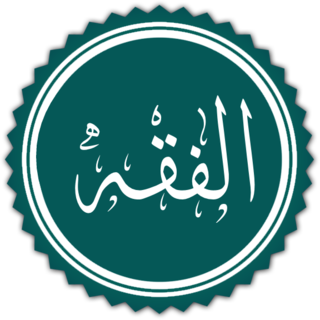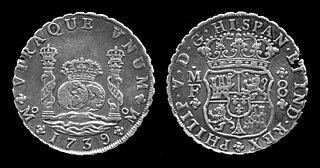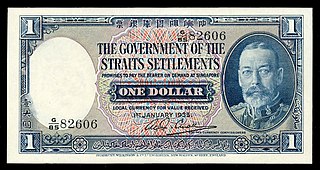The drachma was the currency used in Greece during several periods in its history:
- An ancient Greek currency unit issued by many Greek city states during a period of ten centuries, from the Archaic period throughout the Classical period, the Hellenistic period up to the Roman period under Greek Imperial Coinage.
- Three modern Greek currencies, the first introduced in 1832 by the Greek King Otto (Όθων) and the last replaced by the euro in 2001. The euro did not begin circulating until 2001 but the exchange rate was fixed on 19 June 2000, with legal introduction of the euro taking place in January 2002.

The Kuwaiti dinar is the currency of Kuwait. It is sub-divided into 1,000 fils.

The dinar is the principal currency unit in several countries near the Mediterranean Sea, and its historical use is even more widespread.
Legal tender is a form of money that courts of law are required to recognize as satisfactory payment for any monetary debt. Each jurisdiction determines what is legal tender, but essentially it is anything which when offered ("tendered") in payment of a debt extinguishes the debt. There is no obligation on the creditor to accept the tendered payment, but the act of tendering the payment in legal tender discharges the debt.

The Malaysian ringgit is the currency of Malaysia. It is divided into 100 sen (cents). The ringgit is issued by the Central Bank of Malaysia.

The Brunei dollar, has been the currency of the Sultanate of Brunei since 1967. It is normally abbreviated with the dollar sign $, or alternatively B$ to distinguish it from other dollar-denominated currencies. It is divided into 100 sen (Malay) or cents (English). The Brunei dollar is issued by the Autoriti Monetari Brunei Darussalam.
The dinar is the currency of Libya. Its ISO 4217 code is "LYD". The dinar is subdivided into 1,000 dirham (درهم). It was introduced in September 1971 and replaced the pound at par. It is issued by the Central Bank of Libya, which also supervises the banking system and regulates credit. In 1972, the Libyan Arab Foreign Bank was established to deal with overseas investment. Ali Mohammed Salem, deputy governor of Central Bank of Libya stated the exchange rate of Libyan dinar would be pegged to special drawing rights for one to three years, according to an interview to Reuters on 27 December 2011.

The Jordanian dinar has been the currency of Jordan since 1950. The dinar is divided into 10 dirhams, 100 qirsh or 1000 fulus. It is pegged to the US dollar.

The Indian rupee is the official currency of India. The rupee is subdivided into 100 paise, though as of 2019, coins of denomination of 1 rupee is the lowest value in use. The issuance of the currency is controlled by the Reserve Bank of India. The Reserve Bank manages currency in India and derives its role in currency management on the basis of the Reserve Bank of India Act, 1934.

The Central Bank of Malaysia is the Malaysian central bank. Established on 26 January 1959 as Central Bank of Malaya, its main purpose is to issue currency, act as banker and adviser to the government of Malaysia and regulate the country's financial institutions, credit system and monetary policy. Its headquarters is located in Kuala Lumpur, the federal capital of Malaysia.

The Australian pound was the currency of Australia from 1910 until 14 February 1966, when it was replaced by the Australian dollar. As with other £sd currencies, it was subdivided into 20 shillings, each of 12 pence.

In Sharia niṣāb (نِصاب) is the minimum amount that a Muslim must have before being obliged to give zakat. Zakat is determined based on the amount of wealth acquired; the greater one's assets, the greater the zakat value. Unlike income tax in secular states niṣāb is not subject to special exemptions.

The silver standard is a monetary system in which the standard economic unit of account is a fixed weight of silver. Silver was far more widespread than gold as the monetary standard worldwide, from the Sumerians c. 3000 BCE until 1873. Following the discovery in the 16th century of large deposits of silver at the Cerro Rico in Potosí, Bolivia, an international silver standard came into existence in conjunction with the Spanish pieces of eight. These silver dollar coins played the role of an international trading currency for nearly four hundred years.
The modern Islamic gold dinar is a projected bullion gold coin, so far not issued as official currency by any national state. It aims to revive the historical gold dinar which was a leading coin of early Islam. The currency might consist of minted gold coins (dinars) or of silver coins (dirhams).

The Palestine pound (Arabic: جُنَيْه فِلَسْطَينِيّ, junayh filastini; Hebrew: (פוּנְט פַּלֶשְׂתִינָאִי (א״י, funt palestina'i , also (לירה was the currency of the British Mandate of Palestine from 1 November 1927 to 14 May 1948, and of the State of Israel between 15 May 1948, and 23 June 1952, when it was replaced with the Israeli lira or pound. The Palestine pound was also the currency of Transjordan until 1949 when it was replaced by the Jordanian dinar, and remained in usage in the West Bank of Jordan until 1950. In the Gaza Strip, the Palestine pound continued to circulate until April 1951, when it was replaced by the Egyptian pound.

The Straits dollar was the currency of the Straits Settlements from 1898 until 1939. At the same time, it was also used in the Federated Malay States, the Unfederated Malay States, Kingdom of Sarawak, Brunei, and British North Borneo.

The gold dinar is an Islamic medieval gold coin first issued in AH 77 (696–697 CE) by Caliph Abd al-Malik ibn Marwan. The weight of the dinar is 1 mithqal.

The United States dollar is the official currency of the United States and its territories. The Coinage Act of 1792 introduced the U.S. dollar at par with the Spanish silver dollar, divided it into 100 cents, and authorized the minting of coins denominated in dollars and cents. U.S. banknotes are issued in the form of Federal Reserve Notes, popularly called greenbacks due to its historically predominantly green color.
The Sahrawi peseta is the currency of the partially recognized Sahrawi Arab Democratic Republic. It is divided in 100 céntimos, although coins with this denomination have never been minted, nor have banknotes been printed.














